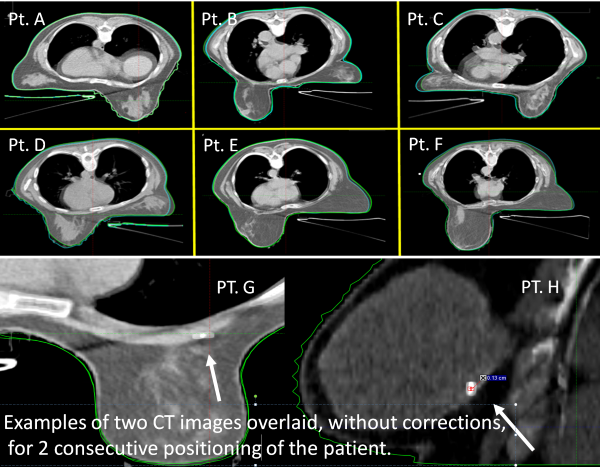Validating pErsoNalized 3D-printed Unique breaSt SHELLs for radiotherapy (VENUS SHELL)
Giovanna Dipasquale,
Switzerland
PO-1290
Abstract
Validating pErsoNalized 3D-printed Unique breaSt SHELLs for radiotherapy (VENUS SHELL)
Authors: Giovanna Dipasquale1, Johannes Wilhelmus Edmond Uiterwijk2, Filip Kassák1, Melpomeni Kountouri1, Marigrazia Di Marco3, Matteo Dell'Omodarme4, Nikolaos Koutsouvelis1, Pelagia Tsoutsou1,5
1Geneva University Hospital, Radiation Oncology, Geneva, Switzerland; 2IT consultant, HeroSupport, Geneva, Switzerland; 3Geneva University Hospital, Oncology, Geneva, Switzerland; 4Univeristy of Pisa, Physics, Pisa, Italy; 5Geneva University, Faculty of Medcine, Geneva, Switzerland
Show Affiliations
Hide Affiliations
Purpose or Objective
Prone breast radiation therapy (RT) can improve the RT toxicity profile, but discomfort and imprecise breast positioning limit its use. Adopting a positioning aid could solve these problems.
We report on the results of the VENUS SHELL study, a proof-of-concept study simulating and evaluating time required for patient (pts) positioning, comfort, positioning accuracy and ability to self-position when using personalized, MRI compatible, shells for breast RT in prone position.
Material and Methods
We enrolled 20 pts, age ≥ 18 years, WHO performance status ≤ 2 undergoing adjuvant RT after surgery. Exclusion criteria included allergies to plastic substances or medical dressings, body weight >90 kg, current pregnancy, and mastectomy without breast reconstruction.
A shell was made based on a surface scan of the body with the pts lying on a table having a transparent element to control, shape and image the region to be immobilized. Ultra-low dose CT scans of pts on the treatment board, 3 with and 3 without shell, simulated planning and repeated treatment. The time required to preposition the pts before each CT and their ability to self-align were measured. Automatic registration of images between the first (reference) CT and the verification (second and third) CTs was used to assess pre-positioning accuracy. The anterior breast to sternum distance was calculated from the CT as a breast pendularity parameter. Comfort was studied through pts surveys.
Results
The median age (range) of the pts was 59 years (41-80), with cup ranging from A to G, 5/15 right/left-sided breast, and median body mass index of 24 (17-32) kg/m2. One pt was excluded from this analysis due to an incorrect procedure. Although there was no significant difference for pre-positioning time with shell versus without shell mean 2 min P = 0.24, when using the shell, the accuracy of pre-positioning increased significantly, see figure, with mean±std.dev translation distance of 1.3±0.8 mm with shell compared to 37±26 mm (P<<0.001) without, and maximum absolute yaw, roll, and pitch average angle of 0.03±0.06° versus 1.02±0.95° respectively (P<<0.001). Without a shell, pts were never able to self-position, whereas with the shell 14/19 pts self-positioned at least once and 7/19 at each CT session. Self-positioning did not require additional adjustments in 9/19 pts at the first repositioning assessment and in 12/19 pts at the second assessment. No significant differences were detected in time, pre-positioning accuracy, and self-positioning by age, BMI, or pts cup . Pendularity did not influence time to pre-position. The prone position was considered more comfortable when using the shell 17/19 pts than without 8/19 pts (P=0.005) with a reduction of the need to move passing from 6 to 1 pts out of 19 when using the shell (P=0.03).

Conclusion
Venus shell™ allows for easy, comfortable, fast and precise positioning of patients, making it a promising solution for breast SBRT treatments.